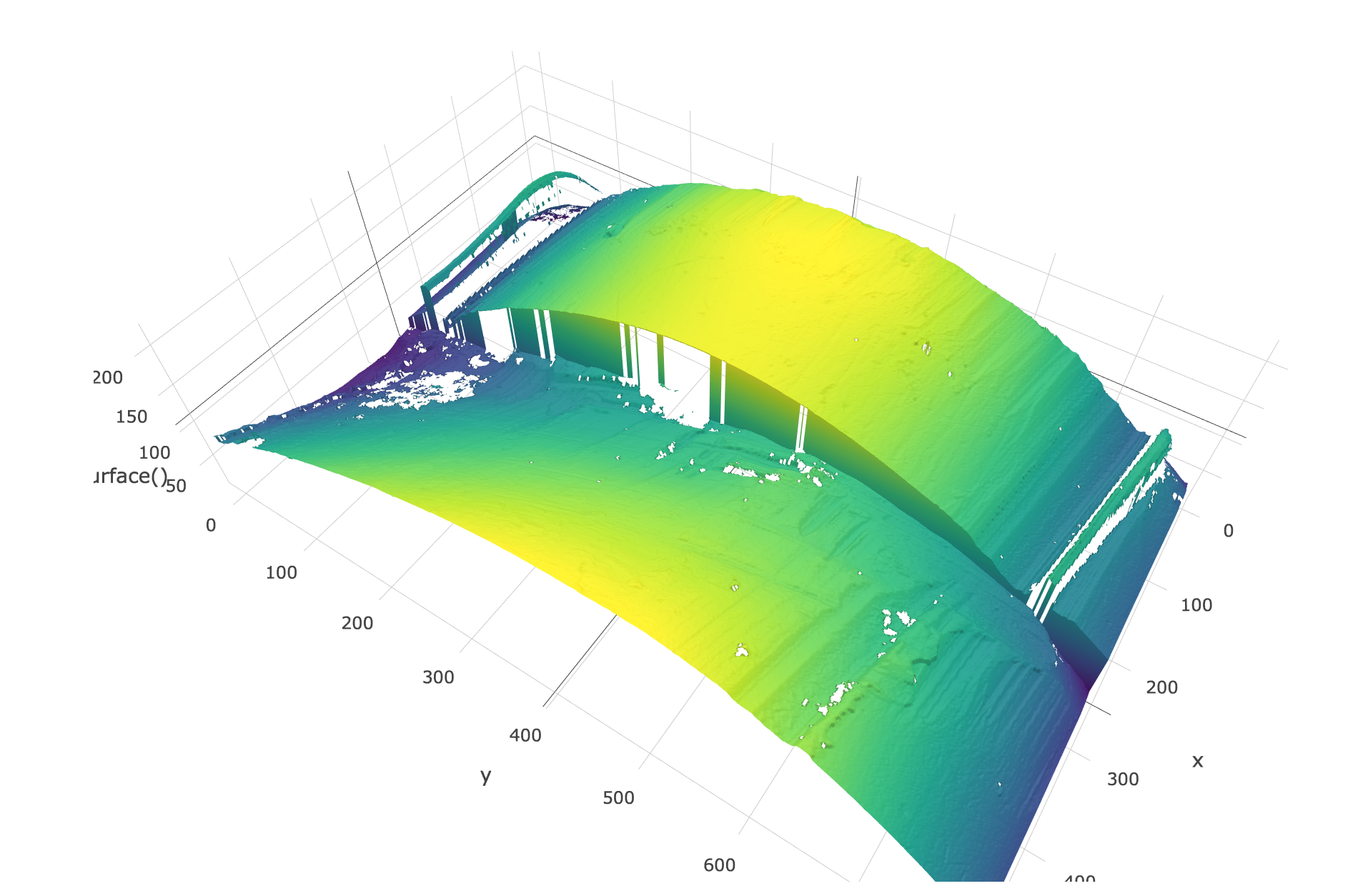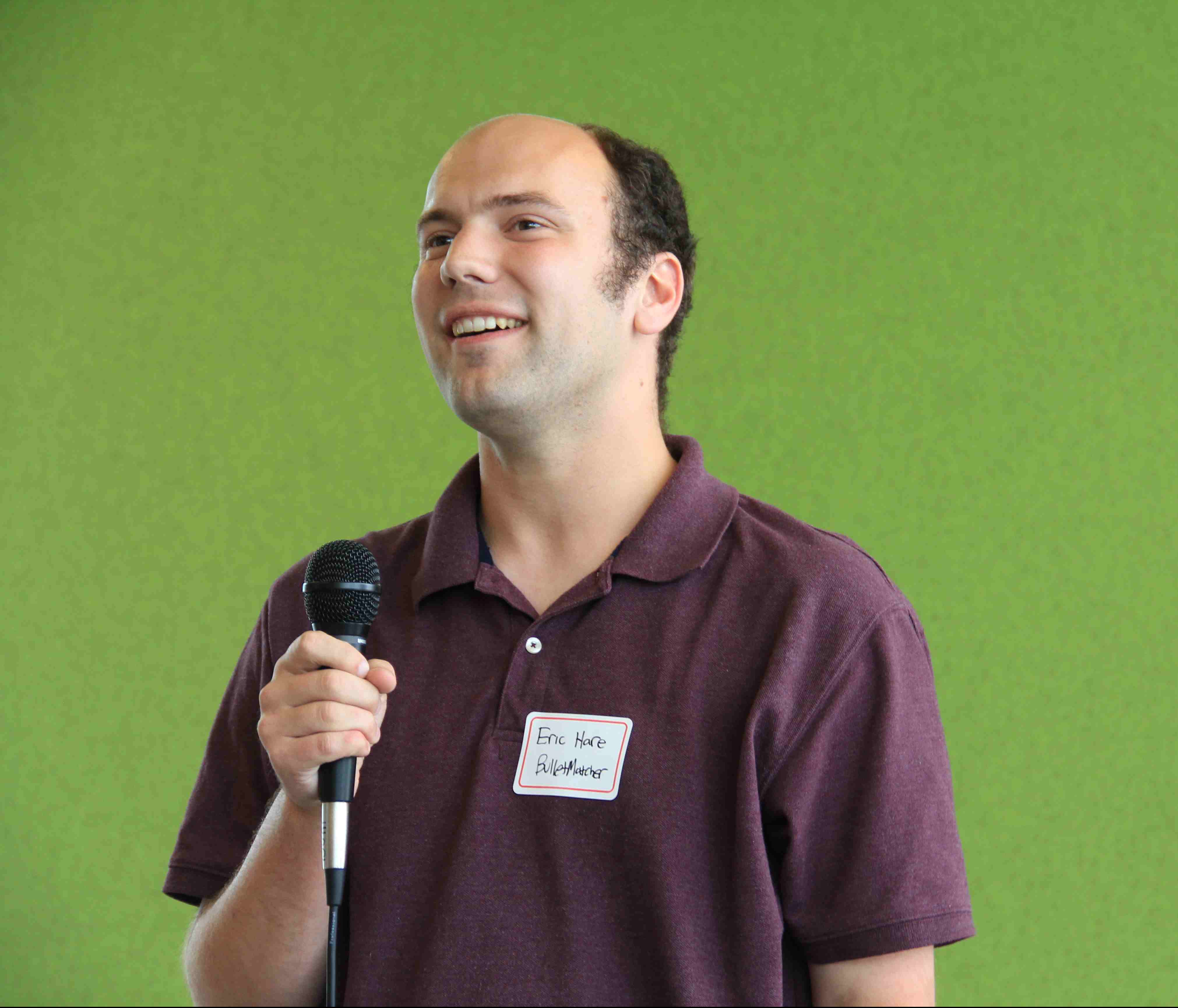
When Eric Hare learned that bullet-matching procedures were done without any determination of error rates, he knew the system needed to be improved.
"There should be more than just one person making a declaration of match or not match," Hare said. "It should be, ‘Here’s the probability. Here’s how much error we could possibly have.’ The juries need to know that so they don’t send someone to either death or life in prison on something that wasn’t all that scientifically determined."
Hare graduated in May with his Ph.D. in statistics and computer science, after completing research on “bullet matching” — the process of identifying whether or not two bullets were fired from the same gun.
To do this, Hare, along with Heike Hofmann, professor of statistics, and Alicia Carriquiry, Distinguished Professor of Statistics and director of CSAFE (the Center for Statistics and Applications in Forensic Evidence), created an algorithm to compare 3-D scans of the surfaces of two bullets. The algorithm then returns a probability of how likely it is they were fired from the same gun.
Now, Hare hopes to use this research to create BulletMatcher, a software program that could be used by police departments, investigators, prosecutors and larger institutions to verify bullet matches using the algorithm they created.

Diana Wright, marketing and programs coordinator for the Iowa State Pappajohn Center for Entrepreneurship, leads the CYstarters program, a 10-week summer accelerator for Iowa State students or recent graduates to focus on their startup or business idea. BulletMatcher is one of twelve innovative businesses selected and currently participating in CYstarters this summer. Hare’s participation is sponsored by the College of Liberal Arts and Sciences.
“BulletMatcher stood out as Eric and his team are solving a very relevant and timely pain-point as we continue to see an increase in crime in the country, but also the need for transparency and accuracy during the investigation process,” Wright said.
Currently, bullet-matching is done manually by experts, with no consistent standardization to their method. Hare hopes his research can change that and is excited for CYstarters to help his work move from research to a marketable product.
"We think there might be a market for something like this, especially for defense attorneys and those who need a second opinion with a statistical foundation," he said. "I’m hoping CYstarters evolves that business side of the equation."
The program brings serial entrepreneurs and experts in various fields to talk to CYstarter students about product development, entrepreneurial finance, marketing, pitching and more.

Hare’s business idea has an advantage in that there is so far only one competitor — Integrated Ballistics Identification System (IBIS) through the National Integrated Ballistic Information Network (NIBIN). But while IBIS checks for matches against a database, it doesn’t give percent errors allowing you to know how close of a match the bullet is.
"IBIS is a black box," Hare said. "You know what comes out of it, you know what goes into it but you don’t know what’s happening inside — and that’s a little bit dangerous when you’re dealing with criminal justice and sentencing people."
One of Hare’s biggest challenges will be convincing the field that this isn’t meant to replace traditional experts. A 3-D viewer of the bullets is part of the software he hopes will help show that experts still have a place alongside the technology. Experts could use this viewer to compare bullets in a way similar to what they already do, but would look at computer 3-D images instead of the original bullets. Hare said this allows users to send scans to multiple people over email rather than shipping bullets. It also enables more experts to cross-examine the evidence.
“This is a new domain for me entirely, but that’s why I wanted to do it – because it’s out of my comfort zone a little bit,” Hare said. “Even if everything goes wrong and it turns out there’s no market for this, I’m hoping at least I’ll come out of CYstarters having figured out the reasons why.”
Faculty, staff, and the community are invited to hear Hare’s and others’ CYstarter pitches at the CYstarters Celebration finale event on Friday, July 28, 10am-12pm at the ISU Economic Development Core Facility (located in the ISU Research Park).